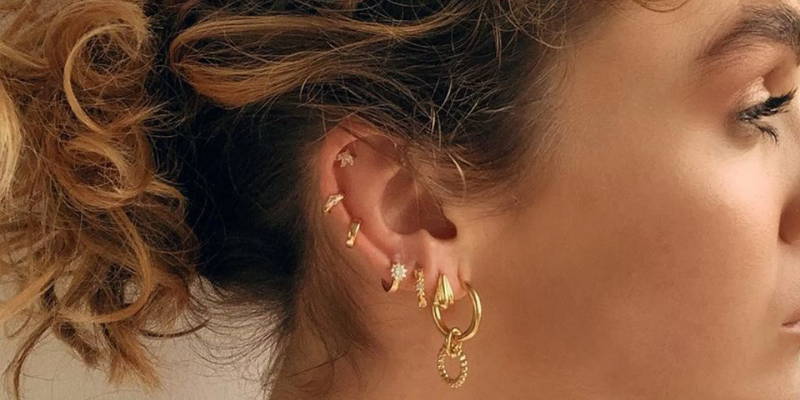Ear piercings may be secure and simple, but there are a few important recommendations to observe while you get it done. If you realize what to anticipate during the piercing and the way to take care of your ear afterward, you’ll cut your chances of infection.
A carefully and beautifully curated ear is now the accessory. And even as the types and combinations of ear piercings you choose are as much as you, we are right here that will help you make a knowledgeable decision.
Keep scrolling to discover extra of the most up-to-date earring trends, from helix to tragus, and take a look at a number of our favorite earrings designers to encourage your subsequent cool-lady piercing.
Which is safer, a piercing gun or a needle?
Depending on where you go for your piercing, and the part of your ear which you choose, an expert with a needle or piercing gun marks a gap and creates a hole. The piercer then places an earring in the hole.
Right parts of ear where you can do piercing?
When it comes to ear piercing, you’re now no longer constrained for your lobe. Your ear’s chock-full of pierceable spots.
The Helix Ear Piercing
Helix piercing that is positioned everywhere at the upper outer cartilage of the ear—is frequently the first choice when moving from the lobe. But as shown by Brooks, this “trending flat piercing” has ended up even extra famous now, and piercers and clients are experimenting with multiple helix piercings on one ear.
This is what all of us truly want, simple or not, those cartilage piercings are super adorable and commonly land on the edge or center of the ear for most. This place allows for personalized placements and truly unique styles
Daith Piercing
Found in a barely awkward position—the hoop that hugs the cartilage at the internal of your ear—the daith calls for a professional piercer. It is likewise rumored to assist alleviate migraines.
As it is positioned on cartilage, you may sense a dull strain while getting the daith pierced, approximately a 5 or six out of 10, with 10 being the most pain. In phrases of recovery time, the Daith piercing takes around 6 to 9 months on average. As with any new piercing, it isn’t always encouraged to sleep on it till it is healed; however, as compared to a few outer-ear piercings, drowsing on a daith piercing inside multiple months is quite common.
Tragus Piercing
The tragus, that tiny flap partially overlaying the ear canal, can upload detail to any curated ear, especially while it is decorated with a quiet stud or snug hoop. As the tragus is a cartilage piercing, you may expect the ache level to fall somewhere among a 4 or 5 out of 10.
Conch Piercing
The conch, located in the center part of your ear cartilage, gets its moniker from its resemblance to the spiral shell of the identical name. It’s quite flexible and may be pierced with a stud for a diffused effect, a double stud (in case you are feeling brave), or maybe a cuff that may hug its way around the edge of your ear. The ache threshold is just like other cartilage piercings—4 out of 10—and recovery takes everywhere from 3 to 9 months.
High-Lobe Piercing
The high-lobe piercing is a fun way to spice up the lobe. They’re especially good for creating a feature out of a poorly-placed piercing you can have had performed earlier. Thanks to the lobe being so fleshy, the level of piercing ache is at a significantly low out of 10. While recovery time is especially brief at six to 8 weeks, that does not mean you have to be lackadaisical in terms of aftercare. You have to continually be following your piercer’s instructions for post-care and maintenance.
Rook Piercing
One of the extra unusual internal-ear piercings, a rook piercing inserts in the internal cartilage, above the daith and among the internal conch and the forward helix.
As a cartilage piercing, the rook doesn’t pierce as easily as say, the lobe. Because of that, you can feel a feel sharp ache and strain at first, to be observed through an extra preferred throbbing. And due to how thick the rook cartilage is—it is a fold of cartilage, after all,—it can harm more than a helix or tragus piercing. Pain is around a six out of 10. Note that recovery time takes anywhere from 3 to ten months.
Standard Lobe Piercing
Last, but surely not least, is the classic, standard lobe piercing. We all recognize and love an amazing lobe piercing. I encourage those constantly. The simplest part of the ear to heal is the
lobe. The least painful is the lobe, too—only a one or out of 10. Although lobe piercings take 6 to 8 weeks to heal, You can change the jewelry after 3 months of healing time.



